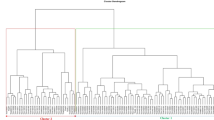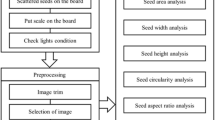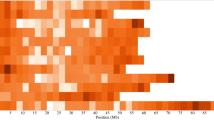Abstract
THE work reported here was initiated to obtain preliminary information about the extent and nature of electro-phoretic variation of esterase isozymes within commercial “pure line” varieties of a self-pollinated species. Many of the agronomic characters which could be used to measure genetic variation have been selected for uniformity within the varieties; however, esterase banding patterns have not been selected intentionally. If these patterns are not correlated with characters previously selected, their variation might be a satisfactory indication of the overall genetic variation present in the varieties.
This is a preview of subscription content, access via your institution
Access options
Subscribe to this journal
Receive 51 print issues and online access
$199.00 per year
only $3.90 per issue
Buy this article
- Purchase on Springer Link
- Instant access to full article PDF
Prices may be subject to local taxes which are calculated during checkout
Similar content being viewed by others
References
Jensen, N. F., Crop. Sci., 6, 501 (1966).
Poehlman, J. M., Crop Sci., 2, 533 (1962).
Davis, B. J., Ann. NY Acad. Sci., 121, 404 (1964).
Sims, M., Nature, 207, 757 (1965).
Author information
Authors and Affiliations
Rights and permissions
About this article
Cite this article
WILLIAMSON, J., KLEESE, R. & SNYDER, J. Electrophoretic Variation in Esterases of Three Varieties of Oats (Avena sativa). Nature 220, 1134–1136 (1968). https://doi.org/10.1038/2201134a0
Received:
Issue Date:
DOI: https://doi.org/10.1038/2201134a0
Comments
By submitting a comment you agree to abide by our Terms and Community Guidelines. If you find something abusive or that does not comply with our terms or guidelines please flag it as inappropriate.



